When I worked for the former personal chef to the princess of Monaco, boneless rabbit roulade was one of the dishes on my station. Essentially it's a roll of rabbit, without bones, stuffed with a slice of prosciutto or other charcuterie that's cooked and sliced, and served warm or cold.
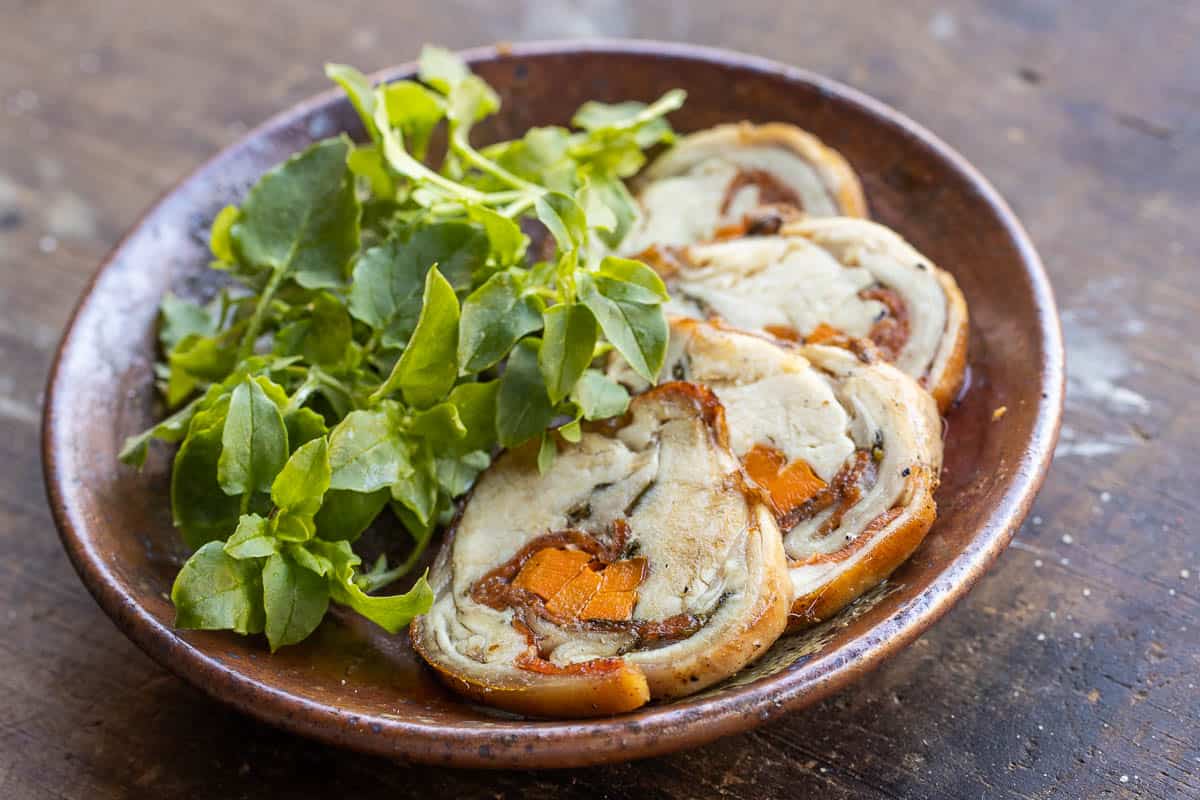
It takes some skill with a paring knife, but as I'll show you here, it doesn't have to be perfect, and it's an ingenious way to get more servings out of a rabbit.
It's also a nice little piece of rabbit charcuterie if you want, and a great stepping stone into the world of deboning animals to make great things like galantines and ballontines, but those are techniques for another post.
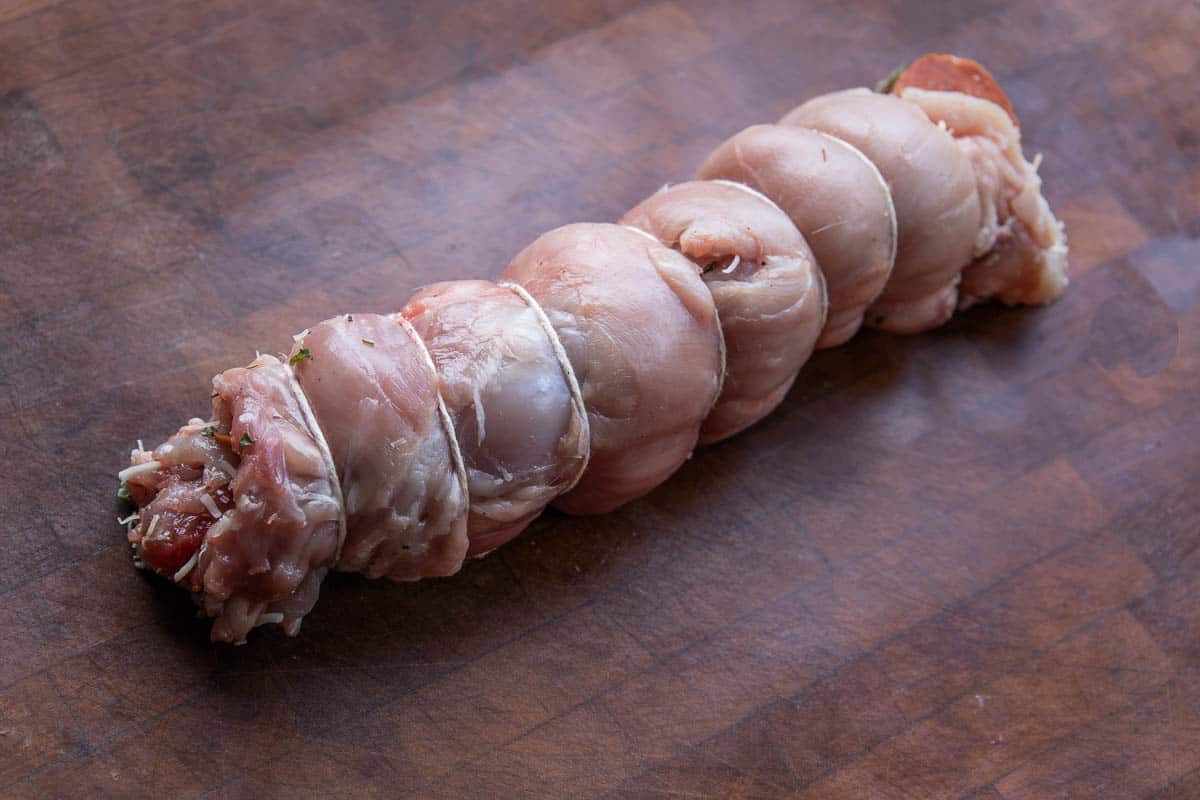
Why rabbit's tricky to serve
From a restaurant standpoint, rabbit can be tricky to put on a menu as it's often expensive. And, unlike a chicken, you only get 2 large legs—no breasts. So, you'll essentially get 2 entree-sized orders from each animal, and a couple bits and pieces (loins, front legs).
Combine that hard cost with the fact that a lot of people in America still consider rabbits more domesticated animals along the lines of a cat or dog, and it's a tricky formula to make work financially. With some creativity though, you can get extra orders/servings out of those rabbits, and it's absolutely worth trying.
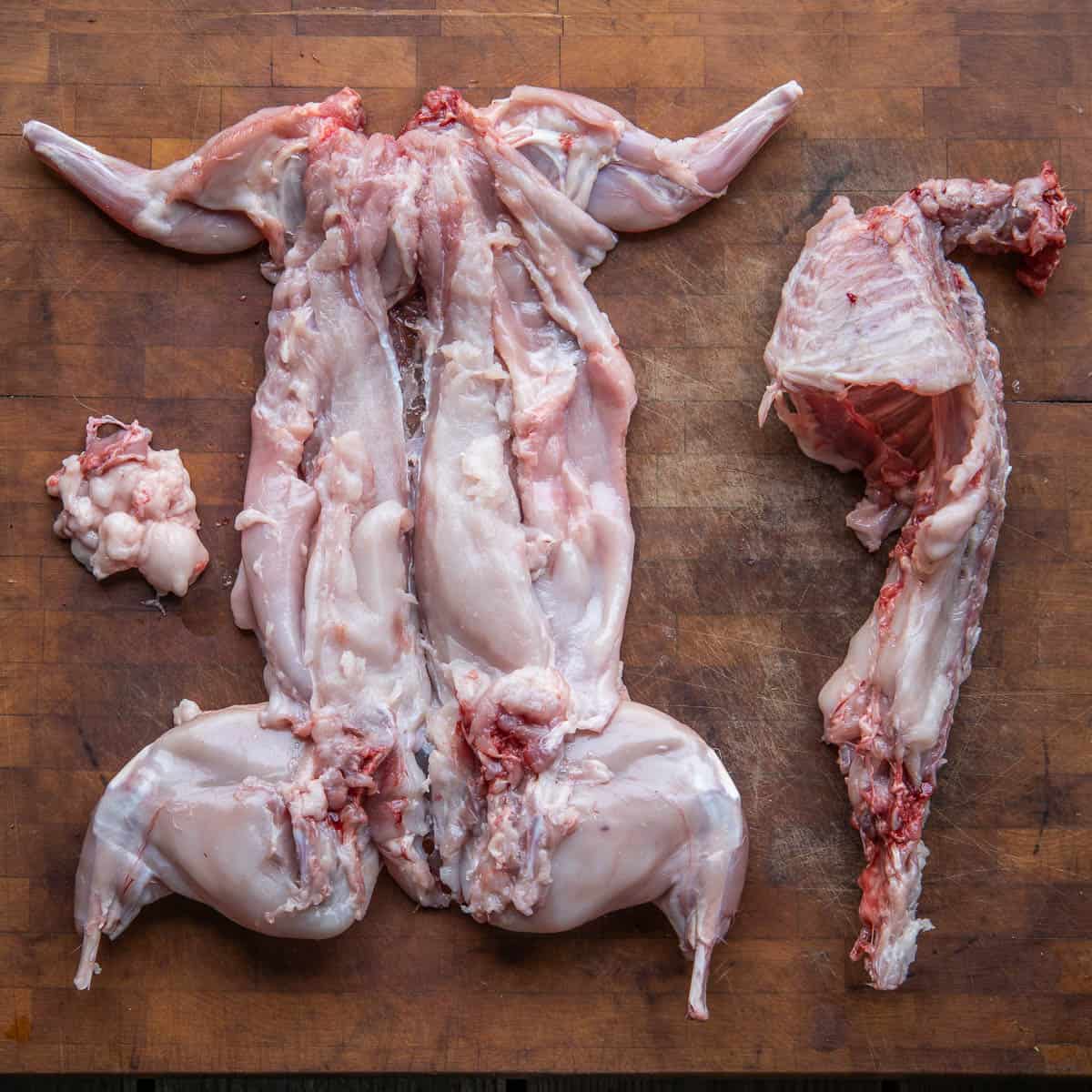
How to debone a rabbit
This is the magic. You're going to need a sharp paring knife, and a little patience. The first thing you do is put the rabbit, cavity-side up, dislocating the front and back legs to stabilize it while you do the detail work (for reference, you can debone a chicken in exactly the same way).
With your paring knife that you sharpened moments before starting, begin carefully cutting next to the rib bones to peel the meat away. it will seem like the meat is paper-thin, and it is. If you make a mistake and break through the skin, it's okay—don't worry. Once everything is all done you'll roll is up and it won't matter.
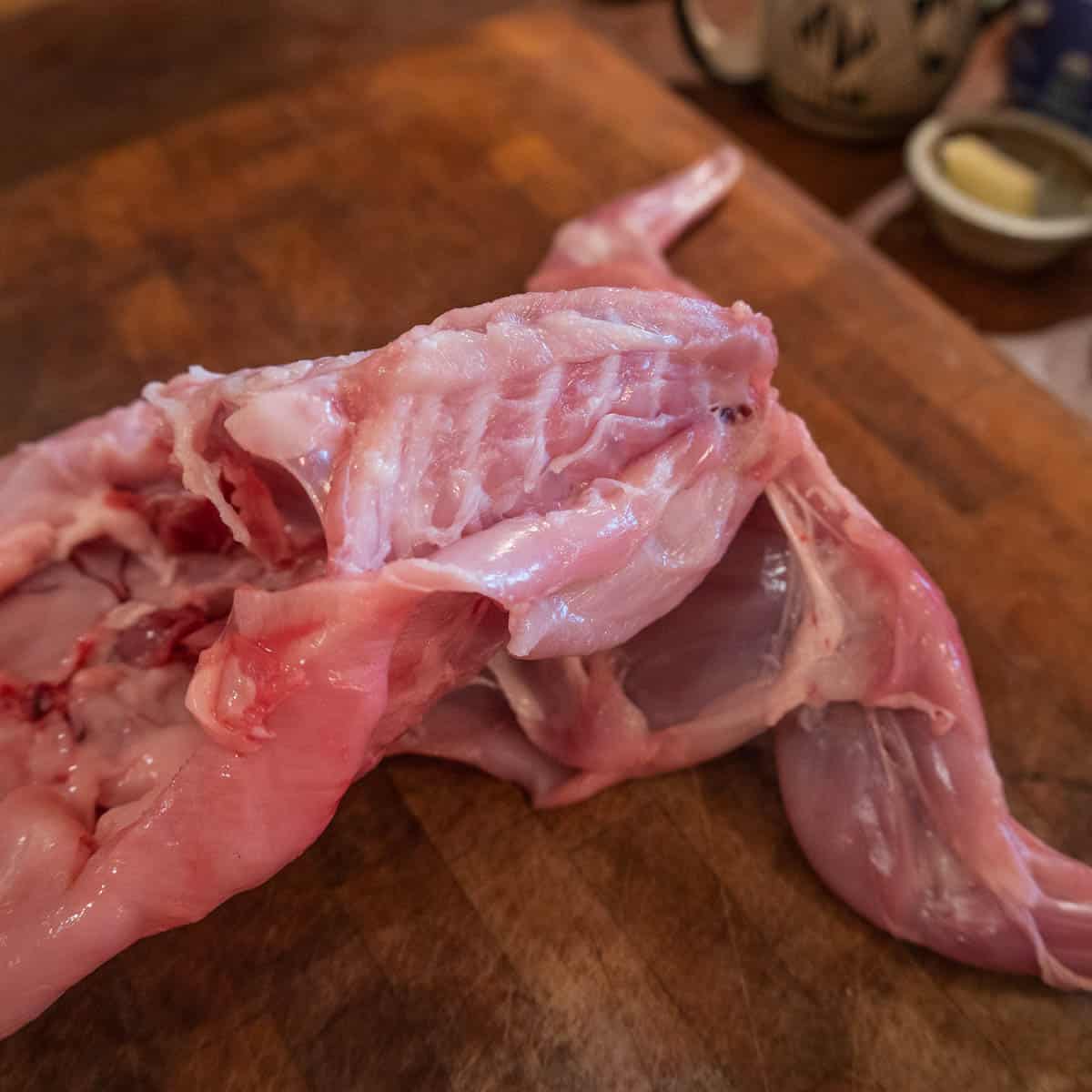
Mind the spine
One you release the ribcage you'll eventually get down to the spine, and that's the trickiest part. The skin is very thin over the backbone, and it may look like it's impossible to separate the meat from the carcass.
Like before, don't worry, if you cut through the rabbit's thin skin here it won't matter in the end since you'll be rolling everything up. Just do the best you can, continuing to make shallow cuts in order to separate the rib cage from the meat.
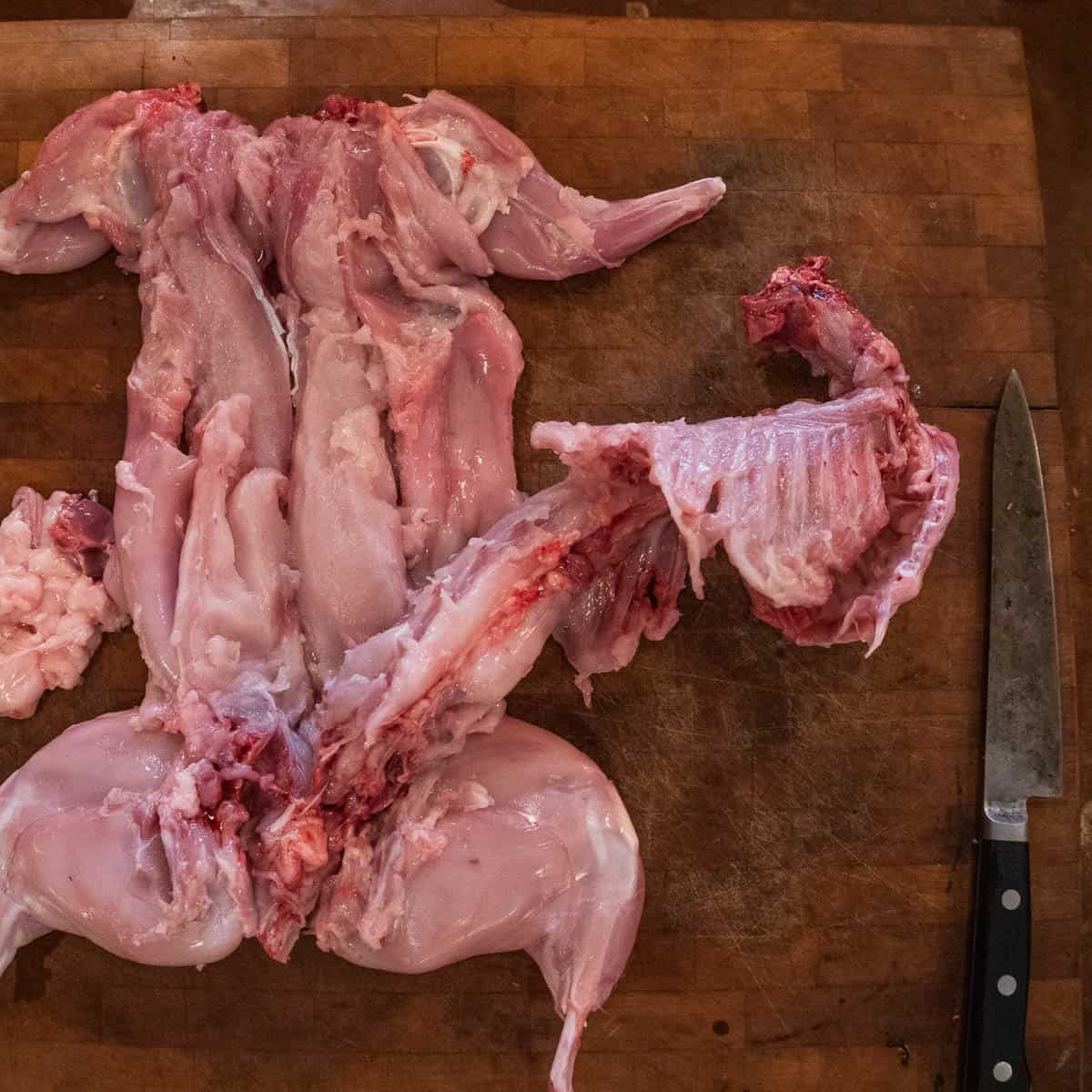
Once the rib cage is out--congratulations! The tough part is done. Now all you have to do is continue removing the spinal column and ribcage, which will come out in one long piece—save that for stock.
Now, you'll be looking at a flat sheet of rabbit meat with the legs still attached. Remove the legs at the joint for another purpose and proceed. You'll also want to remove any kidney suet or fat you see, which is good roasted and added to the stock pot, or rendered in a pan to fry some eggs, etc.

Stuffing
Stuffing is a bit of a misnomer here, since there really isn't much stuffing. You can put all kinds of things in here, but the key is to not over do it. A sprinkle of herbs, a thin layer of prosciutto, a couple julienned carrots is all you need.
You can make a more involved stuffing like a forcemeat or sausage, but since this will be long-cooked you run the risk of it drying out.
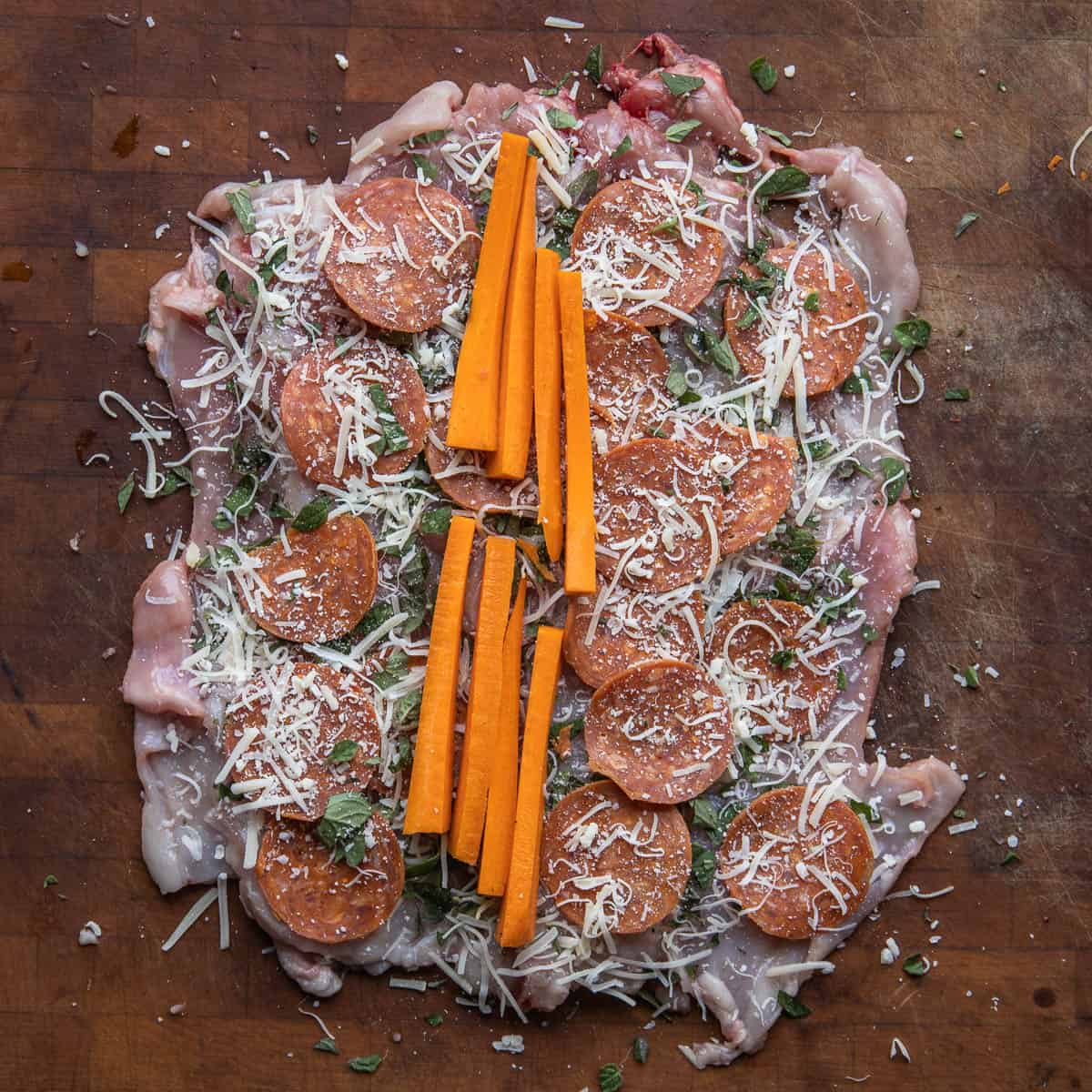
My advice is to try and reproduce my recipe here as close as you can, and branch out afterword on your next rabbit.
For my stuffing, all I used was a few slices of pepperoni that were in the fridge, a scatter of fresh oregano, a sprinkle of parmesan, and a julienned carrot.
Rolling the roulade
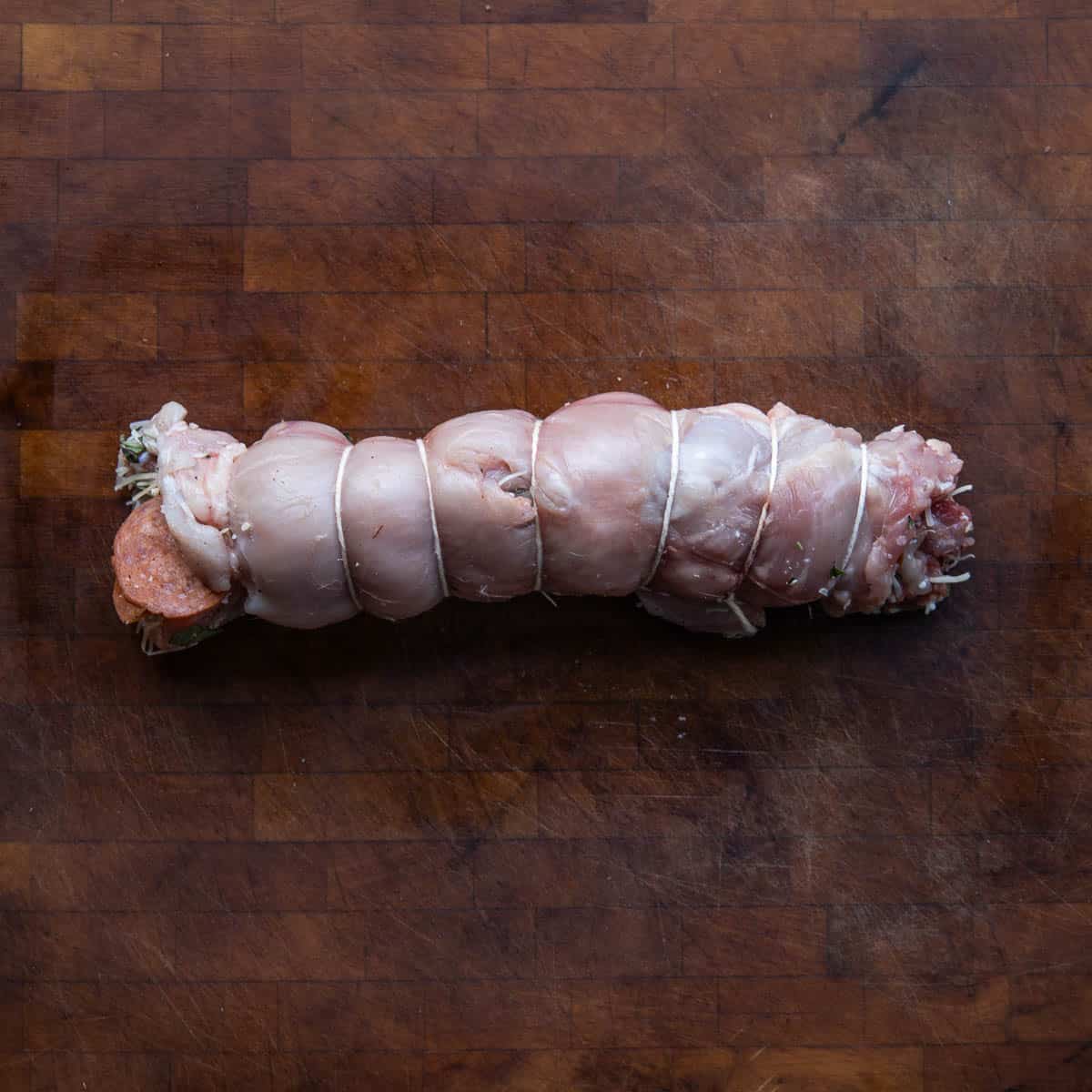
Roulade means rolled, so that's exactly what happens here. Roll the rabbit up into a log, then tie it with butchers twine to keep it snug. If you have a sous-vide machine, you could also vacuum seal it and cook in a water bath, for that, I'd do 190 F for 4 hours.
Cooking
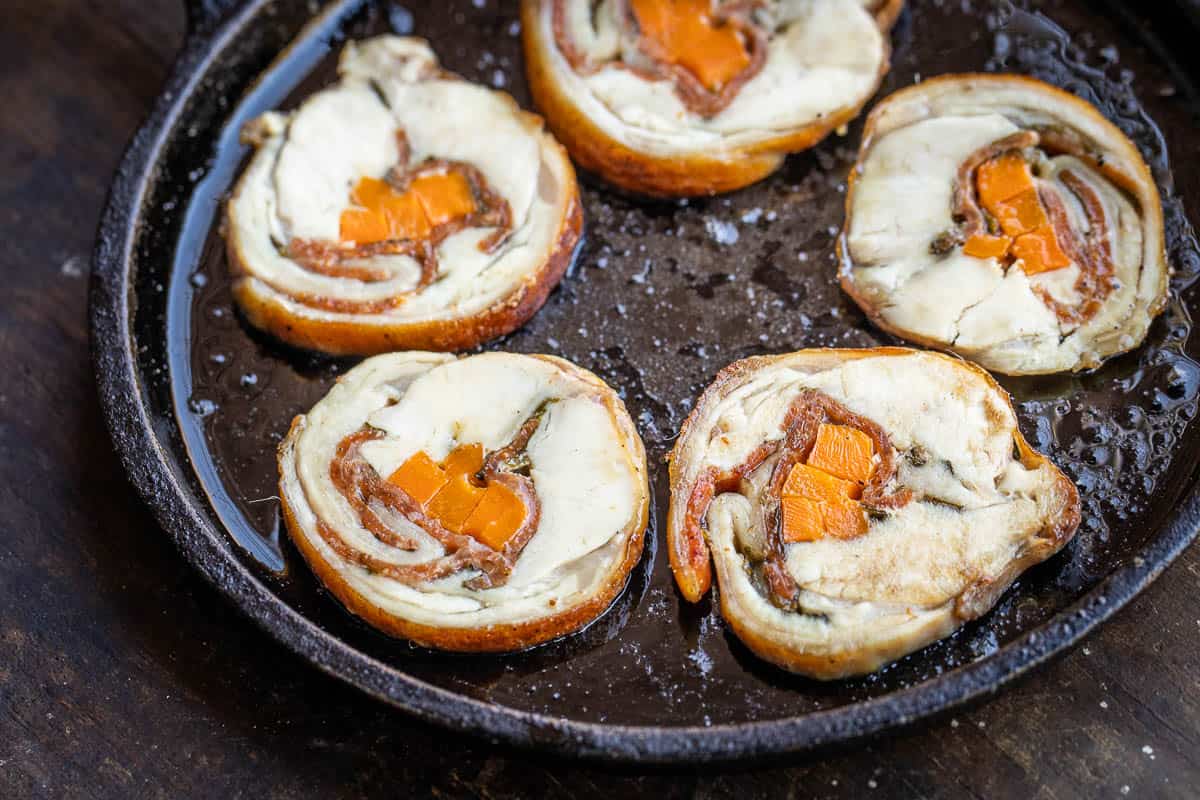
Boneless Rabbit Roulade
Equipment
- 1 Sharp 6 inch utility knife
- 1 butchers twine
- 1 10 inch cast iron pan or similar for roasting
Ingredients
- 1 large rabbit wild or domestic
- 1 medium
- 1 tablespoon chopped fresh oregano or 1 teaspoon chopped rosemary
- Kosher salt and fresh ground black pepper
- Sprinkle of parmesan
- A few slices of prosciutto ham, or salami
Instructions
Deboning the rabbit
- Lay the rabbit cavity-side up on a cutting board. Dislocate the legs and arms to make it lay flat.
Start at the ribs
- With a sharp paring knife, start making shallow cuts at the ribcage, revealing meat until you get down to the spine. Take your time and go slow, but know that if you make a mistake and break through the meat it will be ok.
Removing the spine
- Once you get down to the spine, take your time, revealing meat around the spine until it’s completely freed.
- Continue making shallow cuts, freeing the entire spine and ribcage from the meat. Roast the spine and ribcage in an 375 degree oven in a 12 inch pan for 45 minutes while you prepare the rest of the roulade.
- Once the spine and ribcage are removed, remove the front and back legs and reserve them for another purpose.
Stuffing
- Season the meat lightly with salt and pepper, then scatter on the herbs. Add the salami or prosciutto, along with the sprinkle of parmesan.
- Square off the rounded sides of the carrot to make it into a rectangle, then cut it into ¼ inch julienne. Lay the julienned carrots in the middle of the roulade between the loins.
Rolling
- Roll the boneless rabbit roulade up and tie with twine.
- Once the ribcage and spine are roasted, remove them, then put the roulade in the pan they were cooking in, adding 1 cup of stock and ½ cup of wine that will help release the drippings.
Baking
- Cover the pan and bake at 250 for 2.5 hours. Check on the pan halfway through to make sure it isn’t dry, adding stock as needed to keep a ½ inch layer of liquid in the pan.
- After 2.5 hours, remove the pan and cool for a bit, then carefully remove the rabbit roll, wrap in cling film to prevent drying out, and refrigerate until chilled and firm which makes slicing easier.
- Scrape up any brown bits from the pan, and reserve the cooking liquid for stock, or spooning over the cooked roulade. Strain the stock (optional).
Serving
- Slice the roulade into thin slices, then gently reheat in a pan until warmed through. Meanwhile, reheat the cooking liquid with a splash of white wine. On preheated entrée or salad plates, fan out slices of the reheated rabbit roulade, spooning some of the cooking juices over the top. Serve with a green salad.
Notes
Improvising
Feel free to improvise with some of the stuffing ingredients. Use whatever fresh herbs you have, substitute salami for prosciutto, etc.Nutrition
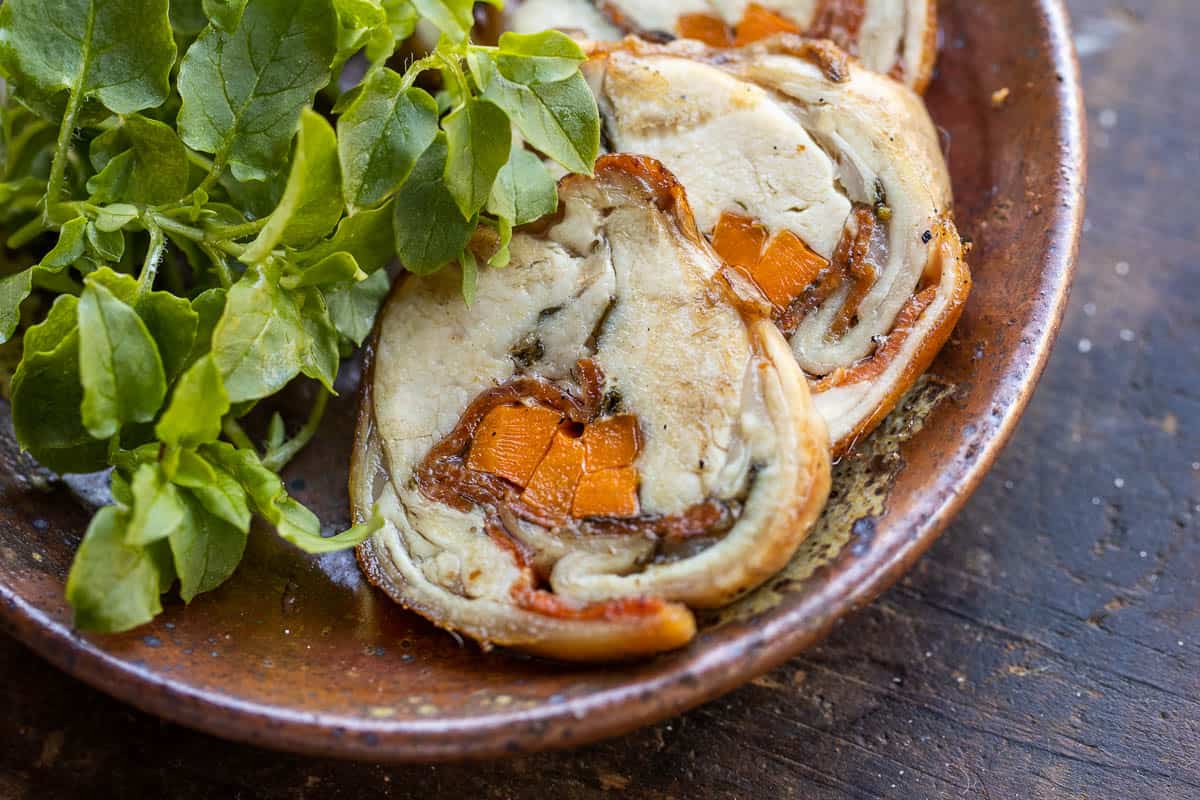


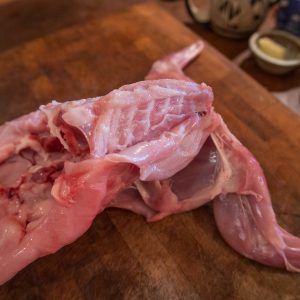

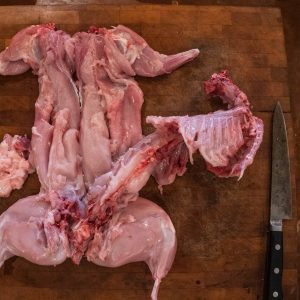
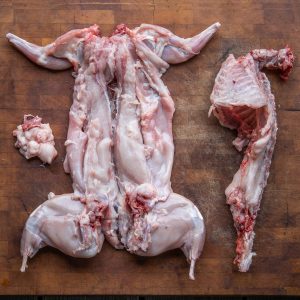
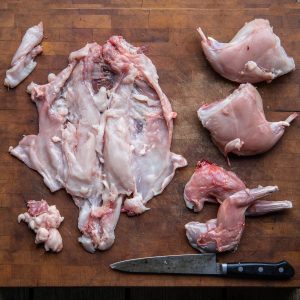

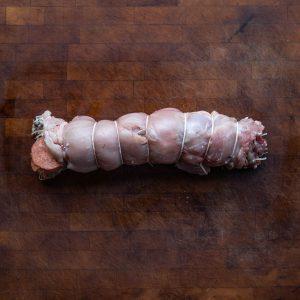

Annie
Love this recipe!
Alan Bergo
Thanks Annie. You're doing some fun stuff over there.